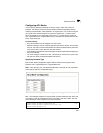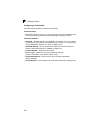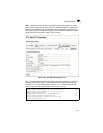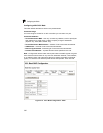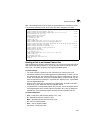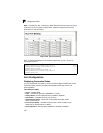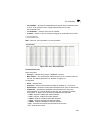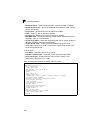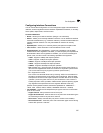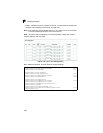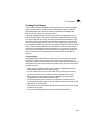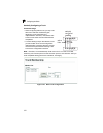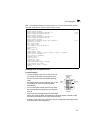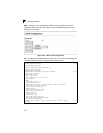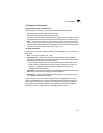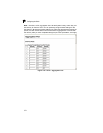
Port Configuration
3-67
3
Configuring Interface Connections
You can use the Port Configuration or Trunk Configuration page to enable/disable an
interface, set auto-negotiation and the interface capabilities to advertise, or manually
fix the speed, duplex mode, and flow control.
Command Attributes
• Name – Allows you to label an interface. (Range: 1-64 characters)
• Admin – Allows you to manually disable an interface. You can disable an interface
due to abnormal behavior (e.g., excessive collisions), and then reenable it after the
problem has been resolved. You may also disable an interface for security
reasons.
• Speed/Duplex – Allows you to manually set the port speed and duplex mode.
• Flow Control – Allows automatic or manual selection of flow control.
• Autonegotiation (Port Capabilities) – Allows auto-negotiation to be enabled/
disabled. When auto-negotiation is enabled, you need to specify the capabilities to
be advertised. When auto-negotiation is disabled, you can force the settings for
speed, mode, and flow control.The following capabilities are supported.
- 10half - Supports 10 Mbps half-duplex operation
- 10full - Supports 10 Mbps full-duplex operation
- 100half - Supports 100 Mbps half-duplex operation
- 100full - Supports 100 Mbps full-duplex operation
- 1000full - Supports 1000 Mbps full-duplex operation
- Sym (Gigabit only) - Check this item to transmit and receive pause frames, or
clear it to auto-negotiate the sender and receiver for asymmetric pause frames.
(The current switch chip only supports symmetric pause frames.)
- FC - Supports flow control
Flow control can eliminate frame loss by “blocking” traffic from end stations or
segments connected directly to the switch when its buffers fill. When enabled,
back pressure is used for half-duplex operation and IEEE 802.3x for full-duplex
operation. (Avoid using flow control on a port connected to a hub unless it is
actually required to solve a problem. Otherwise back pressure jamming signals
may degrade overall performance for the segment attached to the hub.)
(Default: Autonegotiation enabled; Advertised capabilities for 1000BASE-T –
10half, 10full, 100half, 100full, 1000full; 1000BASE-SX/LX/LH – 1000full)
• Forced Mode – Shows the forced/preferred port type to use for the combination
ports
21-24 or 45-48.
- Copper-Forced - Always uses the built-in RJ-45 port.
-
Copper-Preferred-Auto
- Uses the built-in RJ-45 port if both combination types
are functioning and the RJ-45 port has a valid link.
-
SFP-Forced
- Always uses the SFP port (even if module is not installed).
-
SFP-Preferred-Auto
- Uses SFP port if both combination types are functioning
and the SFP port has a valid link.



